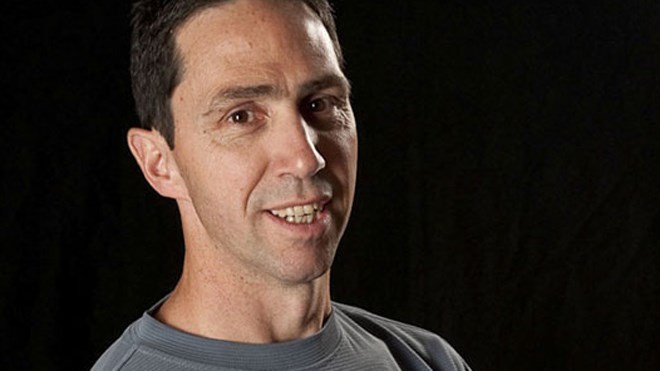For the last six years, Scott Chisholm has traveled around Canada to document the stories of families who have lost a loved one to suicide.
Chisholm, who works as a firefighter in Thunder Bay, lost his father to suicide when he was 17.
“It's the greatest trauma of my life, bar none,” he said about his father's death. “I could be in a bad car crash and it would still not exceed what I've been through.”
But his photography project, called Collateral Damage, was more about his own recovery from his father's death.
“The truth is, I've been in search of one story, and that's my own,” Chisholm said. “And I've figured it out. Quite simply, it's about love.
“If we focus on my dad, it's grey and gloomy, and we can't do anything about it.”
His focus has instead been on telling the stories of survivors, who themselves are at a greater risk of suicide after they lose a loved one.
For Chisholm, just openly talking about suicide helps reduce the pain, and in turn, reduce the risk of suicide for others.
He was in Sudbury on Wednesday where he met with the North East Suicide Prevention Network to help reduce the stigma around suicide, and spoke at a suicide prevention conference at the United Steelworkers Hall on Thursday.
Since 2009, Chisholm has also worked to add suicide prevention courses to various curricula at all education levels.
Thanks to his advocacy the Northern Ontario School of Medicine now mandates all first-year medical students take the safeTALK program – a three-hour workshop that teaches people to recognize someone who may be at risk of suicide, and how to connect them to resources in their community that can help them.
“We had the newest med school in North America – in a region with the highest suicide rate on the planet – and they missed it,” he said.
Chisholm likens safeTALK to CPR training for suicide prevention.
Laurentian University's Faculty of Education also offers the safeTALK workshop for aspiring teachers.
In 2009, there were 3,890 suicides in Canada, a rate of 11.5 per 100,000 people, according to Statistics Canada.
The suicide rate for men was three times higher than the rate for women – 17.9 versus 5.3 per 100,000.
Although suicide deaths affect almost all age groups, those aged 40 to 59 had the highest rates.
Married people had a lower suicide rate than those who were single, divorced or widowed.
Research shows that mental illness is the most important risk factor for suicide; and that more than 90 per cent of people who die of suicide have a mental or addictive disorder.
Chisholm said he hopes suicide prevention can eventually occupy the same level of public acceptance and awareness and cancer prevention and research campaigns.
The more people talk openly about suicide, he said, the more we can help save those who are at risk.
Join Sudbury.com+
- Messages
- Post a Listing
- Your Listings
- Your Profile
- Your Subscriptions
- Your Likes
- Your Business
- Support Local News
- Payment History
Sudbury.com+ members
Already a +member?
Not a +member?
Sign up for a Sudbury.com+ account for instant access to upcoming contests, local offers, auctions and so much more.
